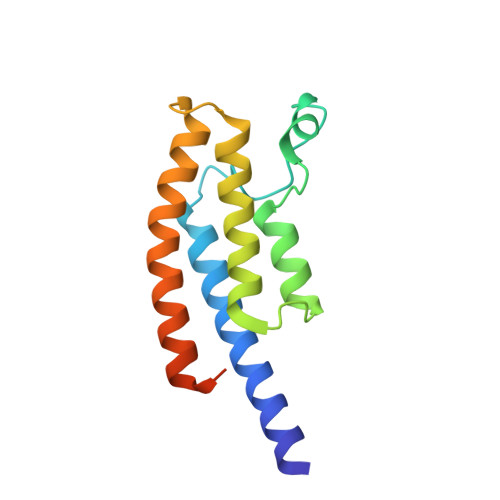Benzoisoquinolinediones as Potent and Selective Inhibitors of BRPF2 and TAF1/TAF1L Bromodomains.
Bouche, L., Christ, C.D., Siegel, S., Fernandez-Montalvan, A.E., Holton, S.J., Fedorov, O., Ter Laak, A., Sugawara, T., Stockigt, D., Tallant, C., Bennett, J., Monteiro, O., Diaz-Saez, L., Siejka, P., Meier, J., Putter, V., Weiske, J., Muller, S., Huber, K.V.M., Hartung, I.V., Haendler, B.(2017) J Med Chem 60: 4002-4022
- PubMed: 28402630
- DOI: https://doi.org/10.1021/acs.jmedchem.7b00306
- Primary Citation of Related Structures:
5MG2, 5N49 - PubMed Abstract:
Bromodomains (BD) are readers of lysine acetylation marks present in numerous proteins associated with chromatin. Here we describe a dual inhibitor of the bromodomain and PHD finger (BRPF) family member BRPF2 and the TATA box binding protein-associated factors TAF1 and TAF1L. These proteins are found in large chromatin complexes and play important roles in transcription regulation. The substituted benzoisoquinolinedione series was identified by high-throughput screening, and subsequent structure-activity relationship optimization allowed generation of low nanomolar BRPF2 BD inhibitors with strong selectivity against BRPF1 and BRPF3 BDs. In addition, a strong inhibition of TAF1/TAF1L BD2 was measured for most derivatives. The best compound of the series was BAY-299, which is a very potent, dual inhibitor with an IC 50 of 67 nM for BRPF2 BD, 8 nM for TAF1 BD2, and 106 nM for TAF1L BD2. Importantly, no activity was measured for BRD4 BDs. Furthermore, cellular activity was evidenced using a BRPF2- or TAF1-histone H3.3 or H4 interaction assay.
Organizational Affiliation:
Drug Discovery, Bayer AG , Müllerstrasse 178, 13353 Berlin, Germany.















